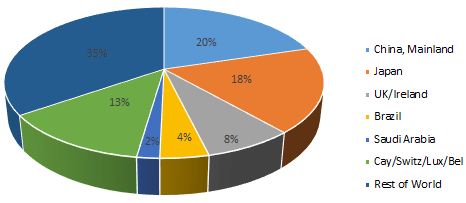
One of the linchpins supporting the U.S. Treasury (UST) market in recent years has been the relative yield advantage against the rates that have existed among the sovereign debt of other G7 nations. In the post-U.S. presidential election landscape, fixed income investors have witnessed a back-up in G7 government bond yields on a global basis, and questions have arisen as to whether said advantage would remain a key contributor to the UST market outlook in 2017, now that the “zero rate club” has shrunk. The best way to answer this query is to examine just who exactly has been buying and who’s been selling, with the first data point looking at developments from the foreign perspective.
Each month, the Treasury Department releases statistics on this front, but it should be noted that the actual data are provided with a one-month lag. Thus, the latest report did not provide any fresh details on how 2017 got started, but it does offer interesting information for calendar year 2016. The report itself is called Treasury International Capital data, or TIC, as it is known in fixed income trading circles, and includes the figures for “Major Foreign Holders of Treasury Securities.”
In terms of total foreign holdings of U.S. Treasuries, last year witnessed a decline of $142.3 billion, following on the heels of 2015’s modest $11.5 billion shortfall. For the record, as recently as 2014, foreign UST holdings surged by nearly $365 billion. It should be noted that the result was a bit of a tale of two cities. Specifically, the first half of the year witnessed a net increase through June, while the second half of the year came in on the negative side of the ledger.
Clearly, when this topic is discussed, the focus goes directly to Mainland China, and last year offered market participants some definite fodder for that discussion. China’s UST holdings fell a hefty $188 billion in 2016, officially dropping the country to number two on the list, behind Japan. As a result, China’s share of the total foreign tally declined to 17.6% (18.2% for Japan), versus a reading of a little over 20% in 2015, and the lowest figure since 2006. To provide some perspective regarding this development, a peak reading of 28% was recorded in 2011.

















